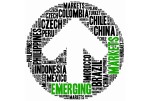MUFG: Prospects for EMEA emerging markets in Q3 2021
MUFG: Prospects for EMEA emerging markets in Q3 2021

A slowing pace of global liquidity growth and apprehensions about the Fed’s tapering impact loom large for EMs.
Policymakers across major EMs are endeavouring to make the right cyclical choices by neither keeping policy so loose that they lose market credibility and let inflation expectations slip, nor tightening so fast that they stymie the recovery still vulnerable to fresh COVID-19 setbacks. We examine which EMs will lead, which will muddle through and which will lag this quarter.
FX views
EM FX has suffered another sell off over the past week due to (i) Delta COVID-19 apprehensions; (ii) slowing growth in China prompting the PBoC RRR cut; and (iii) US stimulus set to fade – this has dragged our MUFG EM FX index back to within touching distance of the year to date lows against the USD from the end of Q1
Trading views
The DM/EM divergence is widening given EMs lag on vaccine inoculations, prompting fresh lockdowns in parts of the EM complex – China’s RRR cut offers some support for EMs but such half-life positivity requires larger actions
Week in review
Over the previous week, June PMI readings across the MENA region were encouraging, the IMF sounded optimistic on Oman’s fiscal trajectory, Poland kept rates on hold and reaffirmed inflation will likely prove transitory and inflation in Russia rose further in June with more rate hikes on the table
Week ahead and calendar
In the week ahead, we will have the rate decision in Turkey (likely on hold), whilst a host of inflation readings for June are expected to demonstrate that CPI has already peaked in some parts of the EM EMEA region
Forecasts at a glance
We remain resolutely bullish on the EM EMEA region, albeit with considerable heterogeneity. We provide our real GDP, fiscal and current account balance, inflation, rates and FX forecasts for this year and 2022
Core indicators
Increasing COVID-19 concerns along with the growing anxiety surrounding the Fed’s tapering strategy continues to lead to volatile EM capital flows – up USD0.4bn w/w as a whole, with investors reducing the exposure to EM bonds (USD-0.2bn w/w), while adding capital to EM equities (USD0.6bn).









